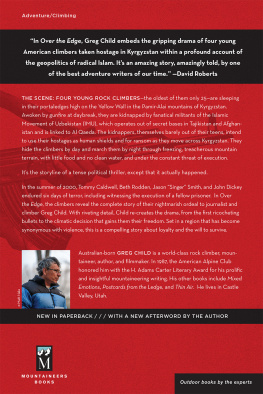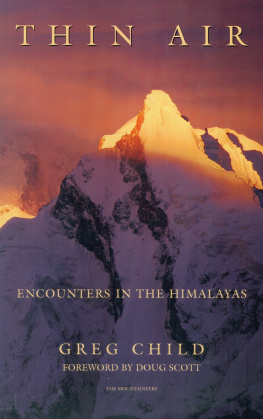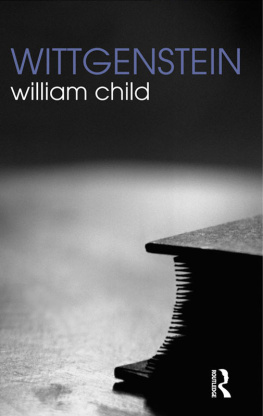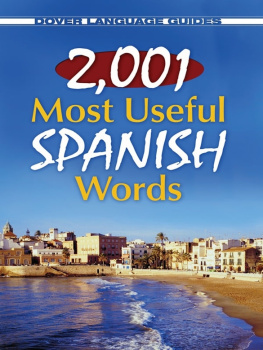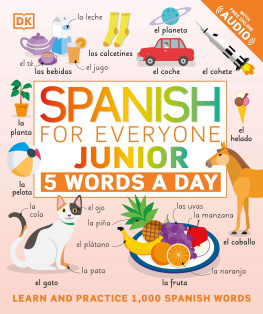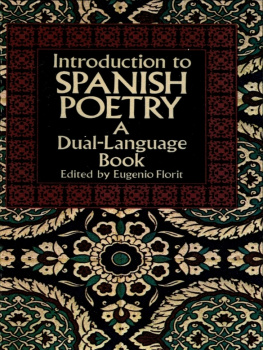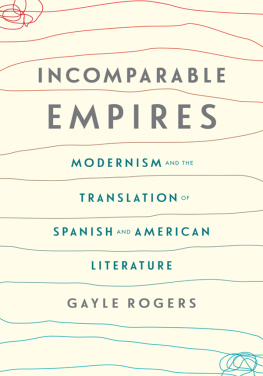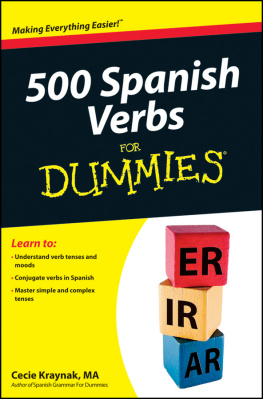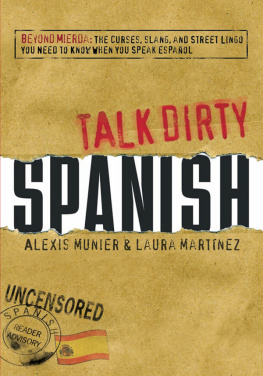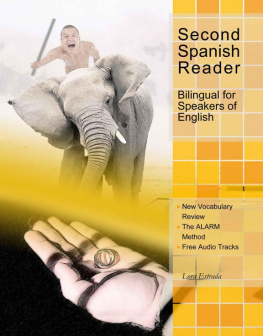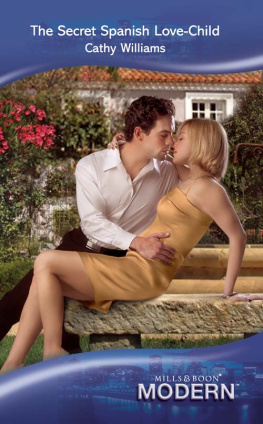Child - Introduction to Spanish Translation
Here you can read online Child - Introduction to Spanish Translation full text of the book (entire story) in english for free. Download pdf and epub, get meaning, cover and reviews about this ebook. year: 2012;2010, publisher: University Press of America, genre: Home and family. Description of the work, (preface) as well as reviews are available. Best literature library LitArk.com created for fans of good reading and offers a wide selection of genres:
Romance novel
Science fiction
Adventure
Detective
Science
History
Home and family
Prose
Art
Politics
Computer
Non-fiction
Religion
Business
Children
Humor
Choose a favorite category and find really read worthwhile books. Enjoy immersion in the world of imagination, feel the emotions of the characters or learn something new for yourself, make an fascinating discovery.

- Book:Introduction to Spanish Translation
- Author:
- Publisher:University Press of America
- Genre:
- Year:2012;2010
- Rating:5 / 5
- Favourites:Add to favourites
- Your mark:
- 100
- 1
- 2
- 3
- 4
- 5
Introduction to Spanish Translation: summary, description and annotation
We offer to read an annotation, description, summary or preface (depends on what the author of the book "Introduction to Spanish Translation" wrote himself). If you haven't found the necessary information about the book — write in the comments, we will try to find it.
Child: author's other books
Who wrote Introduction to Spanish Translation? Find out the surname, the name of the author of the book and a list of all author's works by series.
Introduction to Spanish Translation — read online for free the complete book (whole text) full work
Below is the text of the book, divided by pages. System saving the place of the last page read, allows you to conveniently read the book "Introduction to Spanish Translation" online for free, without having to search again every time where you left off. Put a bookmark, and you can go to the page where you finished reading at any time.
Font size:
Interval:
Bookmark:
SPANISH TRANSLATION
SECOND EDITION
Jack Child

Copyright 2010 by
University Press of America, Inc.
4501 Forbes Boulevard
Suite 200
Lanham, Maryland 20706
UPA Acquisitions Department (301) 459-3366
Estover Road
Plymouth PL6 7PY
United Kingdom
All rights reserved
Printed in the United States of America
British Library Cataloging in Publication Information Available
Library of Congress Control Number: 2009934988
ISBN: 978-0-7618-4897-4 (paperback: alk. paper)
eISBN: 978-0-7618-4898-1
Cover photo: The classic interpreters position between principals:
Dominican Republic President Joaqun Balaguer, the interpreter,
and LtGen Gordon Sumner, US Army, Inter-American Defense
Board. La Revista de las Fuerzas Armadas. Dominican Republic,
Ministry of Defense.
 The paper used in this publication meets the minimum
The paper used in this publication meets the minimum
requirements of American National Standard for Information
SciencesPermanence of Paper for Printed Library Materials,
ANSI Z39.48-1992
For the teachers, colleagues, friends and students
who have shared the walk across this modest bridge
between our two languages, English and Spanish.
This text evolved from my experiences in seventeen years of teaching translation in the Department of Language and Foreign Studies of The American University. In the Spring 1984 Semester the Department offered its first Spanish Translation course as part of a new Certificate in Translation. It soon became clear that there was strong student interest in translation and its practical applications
The texts used in the introductory translation course varied from year to year, but no single satisfactory book or combination of texts was found. Some were too theoretical and required a strong linguistics background; others were narrowly limited to commercial or legal aspects. We collected various materials and approaches which had proven their worth, and during three trips to Antarctica and the Malvinas/Falklands Islands on a sabbatical semester in Spring 1989 wrote the first draft of this present text. It has been refined and further developed in each course offering since, leading up to this second edition, which also served as a sabbatical project..
This book is designed for a third or fourth year college Spanish course. It is an introduction to the history, theory and practice of Spanish-to-English translation (there is also some consideration of English-to-Spanish translation). The 24 lessons in the text form the basis for a 14-week semester course, and each of the lessons includes brief segments on: the history of translation and the profession; introduction to theory of translation; translation problems and techniques; false cognates between Spanish and English; proverbs, idioms, and colloquial Spanish; and translation tidbits (brief comments on the nature of translation and humorous mistranslation).
The book includes 23 exercises geared to the material in each lesson. Suggested solutions and a course syllabus are available from the author: Dr Jack Child, Department of Language and Foreign Studies, The American University, Washington, DC, 20016. (Tel: 202-885-2385; email: . Also consult my Facebook page and Departmental bio).
Although as author I am, of course, responsible for any errors or omissions, a large number of colleagues, friends and students contributed more than their share to this project. Within the University, Department Chairs Anthony Caprio and John Schillinger were constantly supportive, as were colleagues in the Spanish and Latin American Studies group: Amy Oliver, Consuelo Hernndez, Ana Serra, Barbara Fick, Mara Consuelo Gall, Amanda Sharp Hussey, Brenda Werth, Danusia Meson, Jeanne Downey-Vanover, Covadonga Fuertes, Pedro Vidal, Hugo Pineda, Oscar Salazar, Diane Russell-Pineda, Claudia Cicedo, Florencia Corts Conde, Olga Rojer, Hope Doyle, Elena Olsen, Rut Roman, Mara Tamayo, Rosa Derbez, Carolina Gonzlez de Armas, and Jorge Ata. Ann Ferren, Ivy Broder and Haig Mardirosian supported the project from the Provosts office as did Kay Mussell, Dean of the College of Arts and Sciences.. Lorraine Wood and Ivelisse Bonilla, as Teaching Assistants for the Fall 1988 and Fall 1991 offerings of the Introduction to Spanish Translation course, made important contributions to the exercises. Deanna Hammond and Ted Crump of the American Translators Association did a great deal to help bridge the gap between working and teaching translators, and consistently were available to lecture in the course and offer practical advice. Jane Morgan Zorrilla and Sally Robertson kindly provided permission to use ATA publication materials. A number of work-study assistants did much of the searching for materials: Shelly Sweeney, Dauri Sandison, Fernando Alvrez-Tabo, Nadja Reger, Kelly Bundy, Joe Clougherty, Julio Medina, Flora Caldern, Ramona Bock, Sarah Howden, and Marcela Ghiggeri. Judy Pearce provided invaluable editorial assistance, as did Samantha Kirk of the University Press of America.
In preparing this second edition I contacted a number of translation teachers who had used the book and offered comments, corrections and suggestions. Particularly helpful were the responses of Gloria Glvez-Carlisle, Char Chrysler, Sid Love, and Mary-Ann Gosser. Leslie Morginson-Eitzen, colega, compaera y amiga, contributed with her usual patience and understanding, as did Evita Canal de Beagle, Mayo and La Perrichola. The word processing was done with the help of Mara Macarena and Mara Mactusi.
Washington, June 2009.
This introductory Lesson will briefly explain the content of the six different sections you will find in each of the 23 lessons which follow.
The first portion of each lesson will consist of a short note on the history of translation and the development of the profession. The principal figures in the development of translation theory will be mentioned, and some of their ideas will be further developed in part C of each lesson, which deals with theory.
It is important from the beginning to distinguish between the terms translation and interpretation. We will follow the usage employed by the profession, which links translation with the written word, and interpretation with the spoken word. This convention is not always followed by the media and you will frequently hear television commentators referring to the voice of the translator, when it is in fact the voice of the interpreter you are hearing.
As will be seen in the history sections of the following 23 lessons, the history of translation and interpretation are closely intertwined. Mankind spoke before writing, and communication between tribes and nations that spoke different languages or dialects required interpretation long before their thoughts or messages were reduced to writing and thus required translation.
The history of translation and interpretation (T/I) developed in the lessons which follow emphasizes T/I in Western Europe (especially Spain), and Latin America after the Conquest. It necessarily thus ignores the equally rich history of T/I in non-European languages.
B. TRANSLATION TIDBIT.
The Translation Tidbit in each lesson will give you a short anecdote, horrible example, or description relating to translation. It is intended as a sort of break between the more serious sections dealing with History (Part A) and Theory (Part C).
Font size:
Interval:
Bookmark:
Similar books «Introduction to Spanish Translation»
Look at similar books to Introduction to Spanish Translation. We have selected literature similar in name and meaning in the hope of providing readers with more options to find new, interesting, not yet read works.
Discussion, reviews of the book Introduction to Spanish Translation and just readers' own opinions. Leave your comments, write what you think about the work, its meaning or the main characters. Specify what exactly you liked and what you didn't like, and why you think so.

